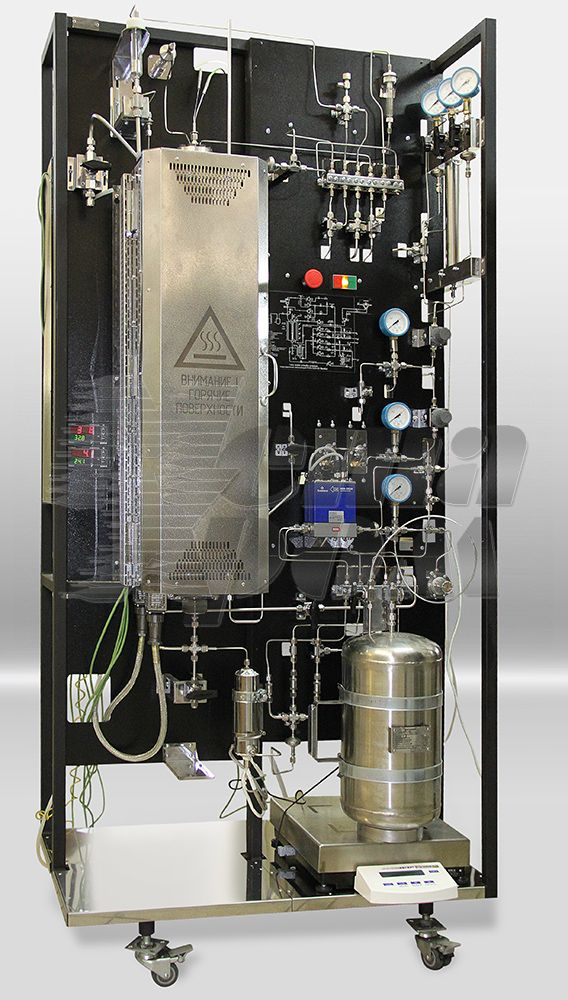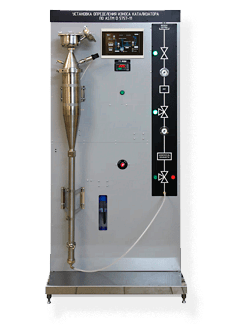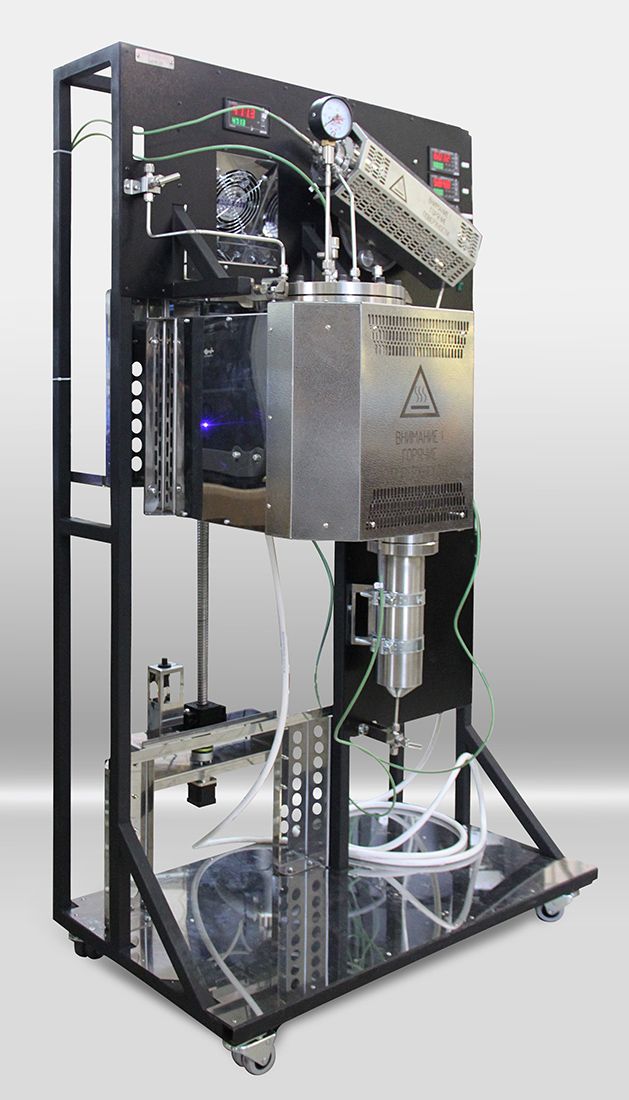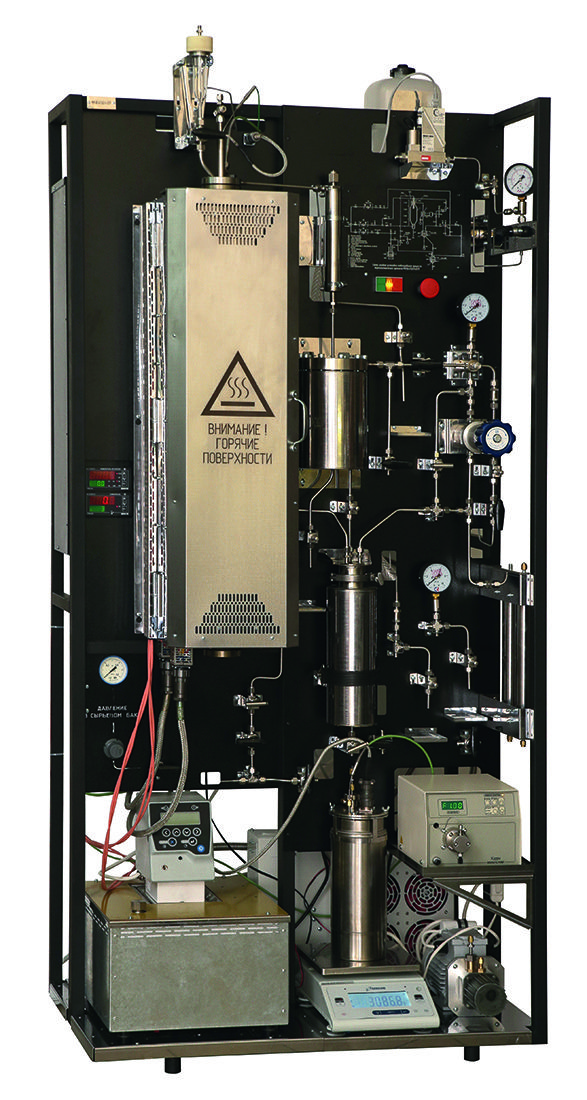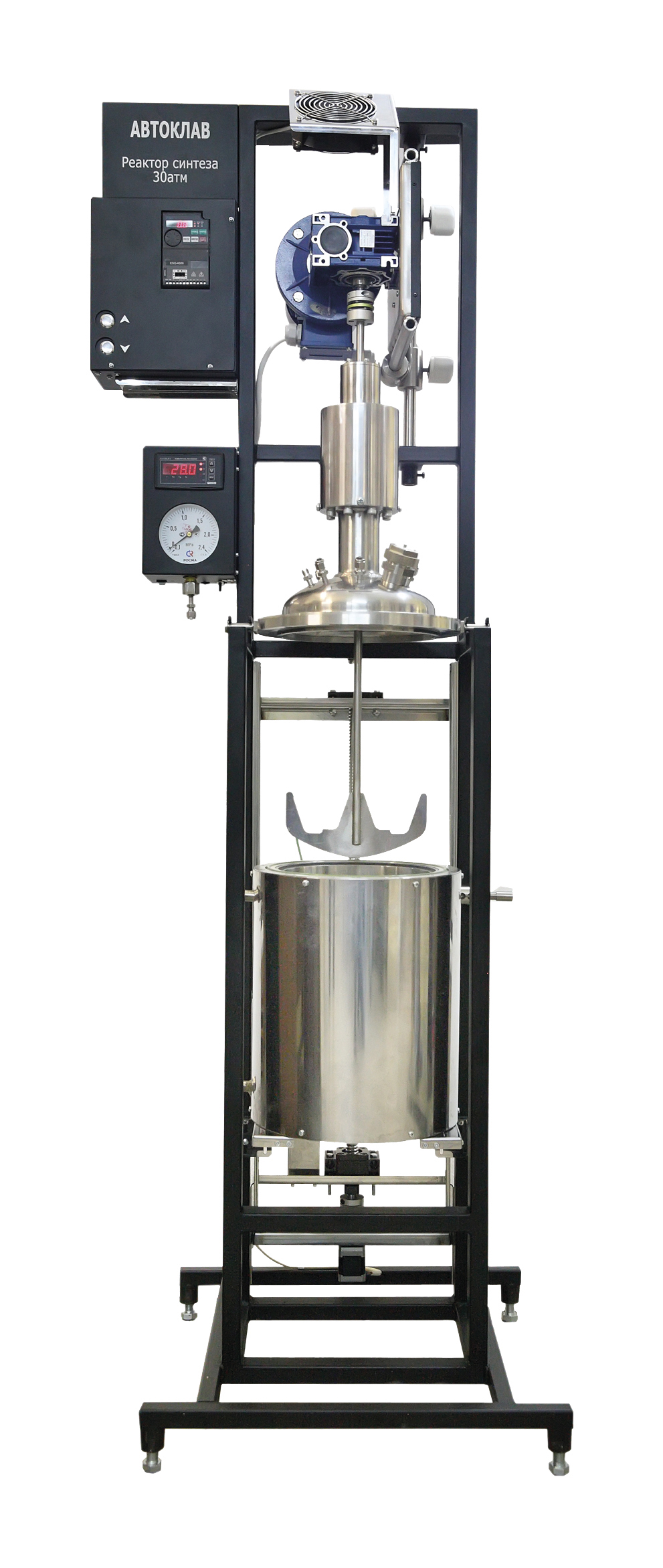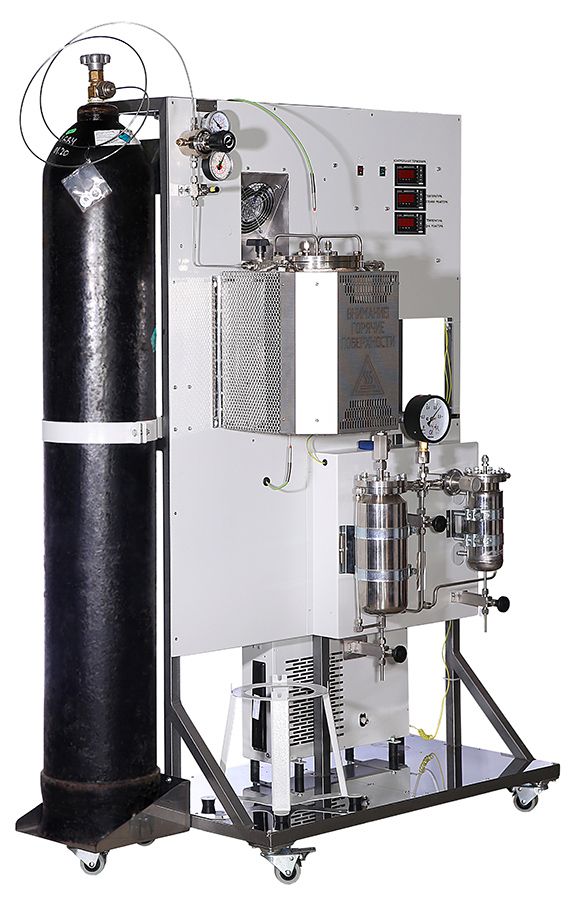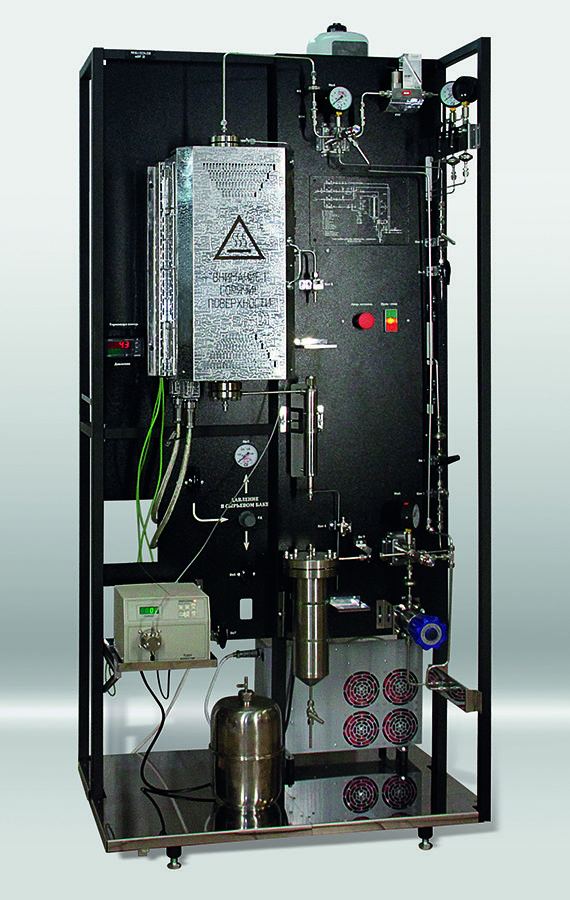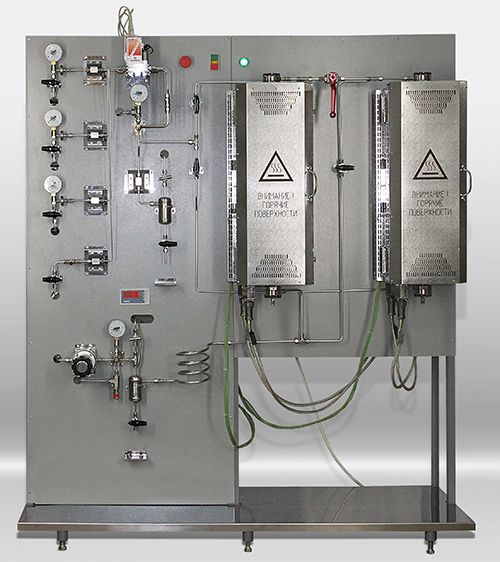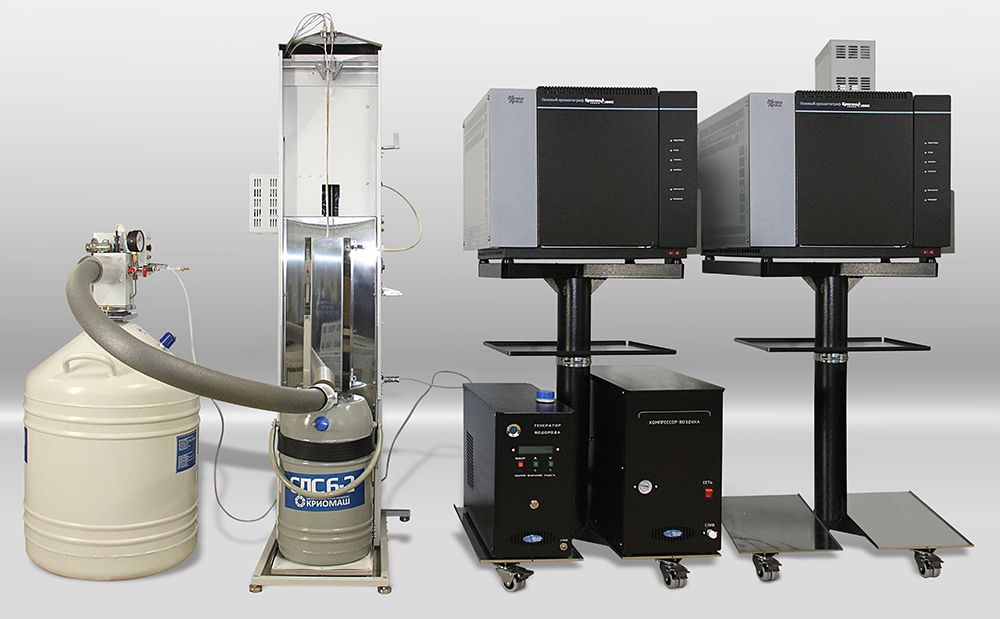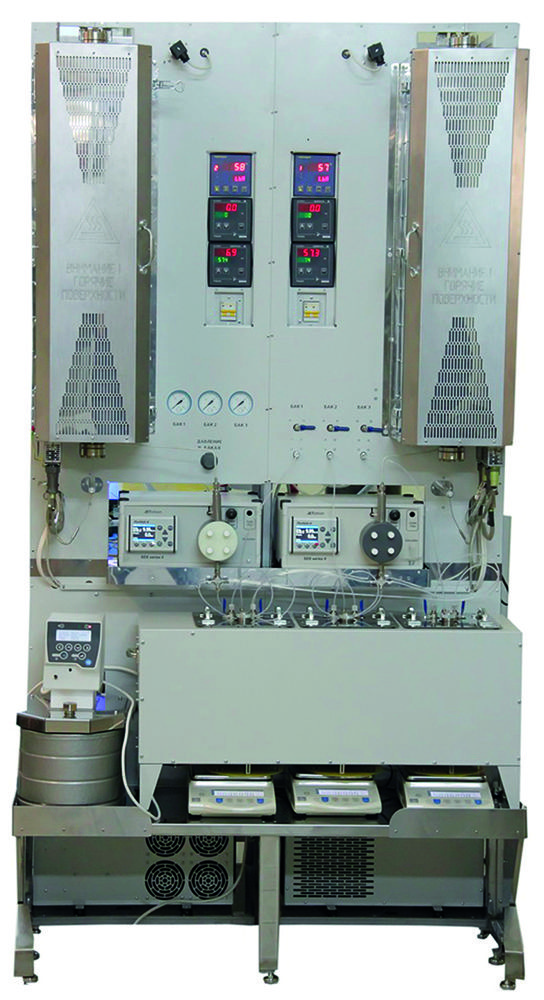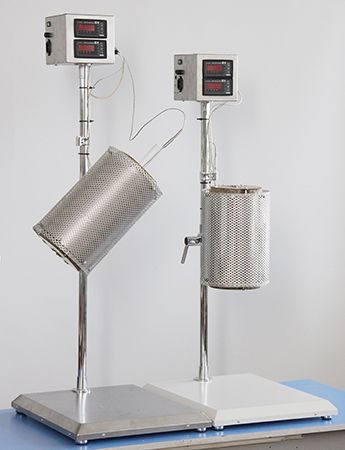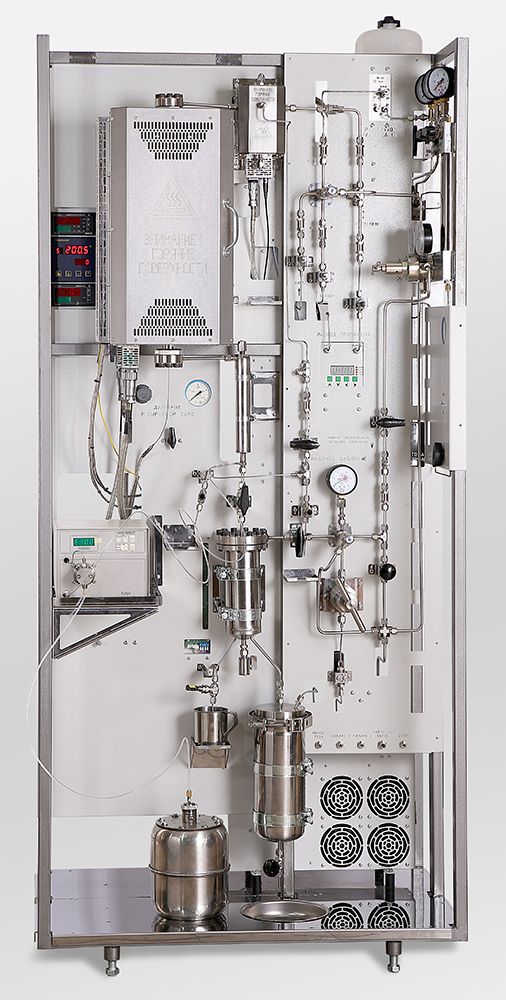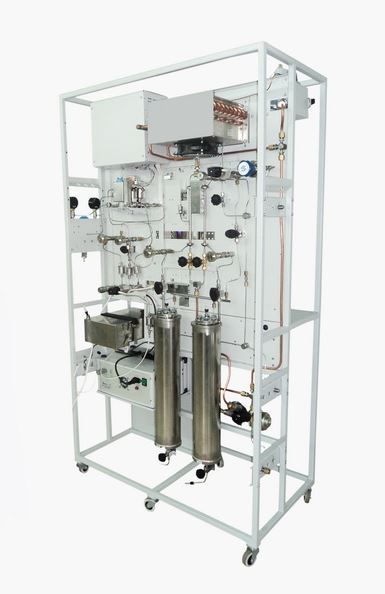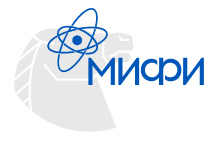Application
Laboratory unit is designed to determine the activity and selectivity of isobutene dehydrogenation catalyst (KDI; KDI-M) in a fluidized bed. Continuous automatic operation mode allows to carry out tests of KDI and KDI-M resource and to explore the physico-chemical properties of pulverized catalysts as well as the technological parameters of the fluidized bed.
Technical specifications
· 800mm long reactor with an internal diameter of 30 ± 1mm and an operating temperature range from 50 to 800°C
· Four gas flows formation (isobutane, nitrogen, air, hydrogen), based on electronic regulators of gas mass flow;
· Power supply 230V 50Hz;
· Dimensions (W x D x H): 800x800x2000mm;
· The unit is placed in a protective ventilated cabinet with a glass lockable door.
Features
· The reactor is made of titanium or nickel-free steel;
· Control thermocouples are located in 4 reactor zones;
· Reactor casement oven with 4 heated zones and operating temperature range from 50 to 800°C;
· Oven automatic accelerated cooling system;
· Gas flows formation error is less than 0.5%;
· Gas flows automatic setting required for the supply and mixing of gases entering the reactor;
· Reactor pressure monitoring to assess the degree of filter clogging;
· Filters’ reverse purging for its cleaning;
· Catalyst automatic loading and unloading;
· Heated reactor automatic filling with nitrogen in case of an abnormal power outage;
· Automatic hydrogen supply for KDI and KDI-M regeneration;
· Gas flow heater before the reactor with a temperature range from 20 to 500°C.
Conducting the KDI and KDI-M test
· The user's software allows you to create an unlimited number of KDI and KDI-M test profiles;
· Synchronization of the Chromatograph with the Net Chrome software allows analyzing the product without user participation;
· Chromatographic determination of the qualitative and quantitative composition of permanent (H2, O2, N2, CO, CO2) and hydrocarbon (alkanes, alkenes up to C6) gases with an assessment of activity and selectivity;
· Execution of an unlimited number of tests cycles;
· Automatic injection of the required amount of one or different catalysts;
· Automatic unloading of the catalyst after the tests completion.

